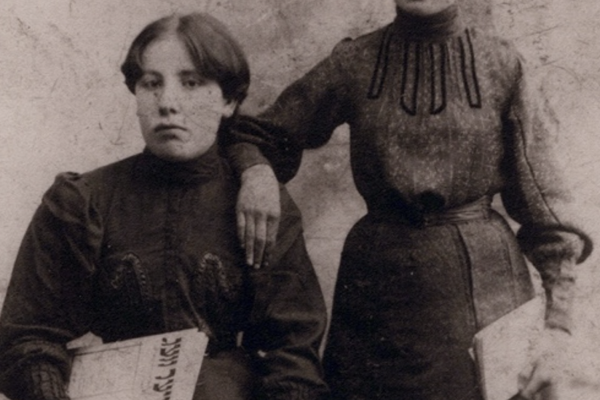Lily Tomlin’s star turn, the recent movie, Grandma, presents–alongside a lot of over-the-top histrionics and screaming–a key truth about the role of grandparents today. More so than in previous generations, grandparents today provide a safety net for and probably bond with grandchildren. And the grandparents who do so are disproportionately grandmas.
In an era when Americans worry about the durability of the family–well, Americans have worried about the family in almost every era–grandparents have become, perhaps with little notice, more important in various ways. The reason starts with simple demography: There are more grandparents in more young people’s lives.
More Grandparents
Because the old die later than ever, Americans have more living grandparents than they once did and have them for longer in their lives. In 1900, about one in five 30-year-olds had any living grandparent; in 2000, about four in five did. Before, almost no 30-year-olds had two living grandparents; now about two in five do. In addition, the rise in divorce and cohabitation over the last several decades means that more American children have both grandparents and step-grandparents. The chances of having art least one of those older people involved in a child’s life grew substantially.
Today’s grandparents are, on average, also notably healthier and wealthier than their own grandparents were, enabling them to do more with and for their grandchildren. And because birth rates dropped over the last several generations (excepting during the Baby Boom), each grandchild has fewer siblings and cousins competing for each grandparent’s attention.
Connection
Given the new ratio of grandparents to grandchildren, one might expect that each grandparent’s emotional bond to each grandchild would be stronger. It is hard to find direct historical evidence on that. The respondents who sociologists Andrew Cherlin and Frank Furstenberg interviewed for their 1986 book, The New American Grandparent, tended to report more intimacy with their grandchildren than they recalled sharing with their own, often emotionally distant, grandparents. In 2001, sociologist Vern Bengston reported, based on the Longitudinal Study of Generations–a study in the Los Angeles area of about 400 families over four generations–high and unchanging levels of “affectual solidarity” between grandparents and grandchildren since the 1970s. In a later analysis, Bengston found that grandparents’ influence on their grandchildren’s religiosity had not changed in the last roughly 35 years.
Of course, there are wide variations in the ties between grandparents and grandchildren. Distance matters. Grandparents who live nearer are more involved and feel closer to the children than do grandparents who live farther away, phones and internet notwithstanding. The impression that in olden times grandparents shared a home with their children and their grandchildren is misleading. High death rates meant that a minority of homes housed three generations at a time and even then, the children in such homes did not grow up to adolescence with a grandparent. Through the twentieth century, the three-generation household became still rarer–usually seen only among poor and immigrant families–and yet actual contact with grandparents, most now living independently in their own homes, expanded.
Gender also matters for grandparental contact, in a few ways. For one, given the difference in men and women’s life spans, grandmothers are more likely to be around for their grandchildren than are grandfathers. Beyond that, children are generally more connected to their mothers’ parents rather than to their fathers’ parents; and they are also more involved with grandmothers than with grandfathers, even when the latter are around. These gender patterns show up starkly when break-ups occur, either of the parents or the grandparents. Grandmothers typically stay more connected to the grandchildren after parental or grandparental divorce than do grandfathers.
Backup
As the elderly have become more robust and affluent, and as in recent years young adults have struggled more economically, grandparents have played increasingly important backup roles, with their money and their labor, notably providing childcare. Moreover, the rise of divorce and of single-parent families has meant that more grandparents have brought grandchildren into their own homes.
There is some, albeit mixed, evidence that, in the United States, grandparents’ resources assist grandchildren to get ahead even beyond the resources that they pass on to the parents, although that pattern may mainly apply to lower-income grandchildren. (Think of the affluent elderly couple with a starving-artist grown son or fallen-on-hard-times daughter but a grandchild who would like to go to medical school or would like to buy a starter home.) In any case, living, healthy, and reasonably well-off grandparents are safety nets should the need arise.
Which raises this question: If today’s teens and young adults each have more living, connected grandparents and step-grandparents helping them, won’t they tomorrow, as middle-aged adults, each have more grandparents and step-grandparents whom they have to help through the last stages of life? Moreover, the 80- and 90-somethings of tomorrow will probably not to be as wealthy as today’s, given the economic weaknesses of the last few decades. The favorable grandparent-to-grandchild ratio may become an unfavorable one soon enough. Are we prepared?








